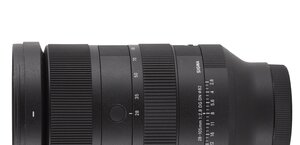Samyang AF 85 mm f/1.4 FE/RF
8. Vignetting
| A7R II, APS-C, f/1.4 | A7R II, APS-C, f/2.0 |

|

|
The light fall-off in the frame corners is noticeable only near the maximum relative aperture where it reaches 30% (−1.03 EV). By f/2.0 it disappears practically completely, amounting to 5% and −0.16 EV.
Please Support UsIf you enjoy our reviews and articles, and you want us to continue our work please, support our website by donating through PayPal. The funds are going to be used for paying our editorial team, renting servers, and equipping our testing studio; only that way we will be able to continue providing you interesting content for free. |
- - - - - - - - - - - - - - - - - - - - - - - - - - - - - - - - - - - - - - - - - - - - - - - -
After passing to the bigger, full frame sensor there are far more problems, as you can notice while looking at photos presented below.
| A7R II, FF, f/1.4 | A7R II, FF, f/2.0 |

|

|
| A7R II, FF, f/2.8 | A7R II, FF, f/4.0 |

|

|
The loss of light at the maximum relative aperture is really huge as it amounts to 65% (−3.00 EV). The vignetting is also easy to notice by f/2.0 where it gets to 37% (−1.34 EV). Fortunately from f/2.8 onwards the problems end as the brightness loss at that point reaches 18% (−0.57 EV), and by f/4.0 it drops to a level which might be considered imperceptible – 8% (−0.25 EV).
Here the Samyang's performance is definitely weaker than that of the Sony GM 1.4/85 which, at the maximum relative aperture, had vignetting of just 54%. Still in the case of the Sony the vignetting decreased slower on stopping down so by f/2.0 both lenses have practically the same results and on further stopping down the Samyang actually performs better.
| Sony A7R II, JPEG, f/1.4 |
 |






